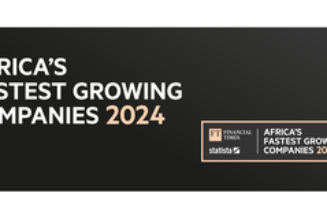Boss Talk
Jane Karuku: EABL managing director on navigating crisis after crisis for the alcohol industry
Friday August 04 2023

Jane Karuku is the EABL managing director. ILLUSTRATION | JOSEPH BARASA | NMG
The alcohol industry has been facing some of its toughest challenges yet — from having to compete with fuel companies for ethanol and sorghum with households and dealing with the global supply chain disruptions at a time when fuel costs have gone through the roof.
Fresh from reporting a 20 percent drop in full-year profits for the year ended June 2023, East African Breweries Plc (EABL) boss Jane Karuku spoke to the Business Daily about how the company has been navigating the business environment.
It has been two and a half years at the corner office. What is defining your leadership?
When the Covid-19 pandemic eased, we thought we were done and then 2022 and 2023 happened. I have learnt how to navigate things that are not within your control.
I think that’s probably the biggest leadership lesson of our time as it is very professional and this doesn’t only apply to business leaders, even teachers, hospitals and politicians are going through interesting times.
It looks like the business has been moving from one crisis to another?
Somebody told me the other day that this is the way of life from now because we have been going through crises.
I think it’s just the world changing, you think one crisis is done and another follows. Who would have thought Covid could be followed by such a serious drought?
I think we have been ready as life is not going to be smooth. It’s about sticking to the strategy as it’s the only thing you have control over.
As a managing director, how do you remain agile?
The thing for us is sticking with consumers. As a company, [we are] in the fast-moving consumer goods category, which means we are a very consumer-front business.
If a consumer changes, you follow him or her then you will be fine. That’s in the strategy. We have the arsenal in the business to follow our consumers.
It is research to understand where the consumer is going, brand to follow the consumer, innovation, route to market, talent and capital investments.
It’s about brands, innovation, digitisation, supply, people and reputation. If you do all this, then you have a chance to weather the storm.
How would you sum up the operating environment for EABL over the past year?
I think the business is resilient and I would tell shareholders that the business fundamentals are very strong and because we are very customer-centric, we follow where the consumer is going with all our assets.
In terms of the cogs, sometimes it can be too much that if you decide to pass all the costs to the consumer, then you make your brand inaccessible.
I think it was one year which I hope won’t be repeated where you have everything [tailwinds]. You are competing with fuel companies for ethanol, you are competing for sorghum with households, and then there are global supply chain disruptions with fuel costs going up so you have to continue paying for the high fuel and then on top of that your electricity supplier lifts prices.
It was really a bad cocktail of many things. Ordinarily in a normal year, you increase the price to cover that cost but if you look…we had a 40 percent increase in power costs, 61 percent was ethanol and 31 percent was grain, covering that you kill the business.
These are some of the hard decisions confronting you. If you also try to absorb all the costs, then you are leaving the business’s survival exposed.
Your low-end consumers have not been able to keep up with the price changes if we look at the falling sales volumes in the category. What is usually your general observation when this happens?
The low-end consumer has been getting more pressure from rising prices because their pie is very small yet it has to be cut into the same number of pieces and the pieces are only getting larger. Other consumers have perhaps more flexibility.
How do you balance between absorbing some of your costs and passing some to the consumer?
We have had elasticity studies and we know the decline in volume when prices increase. At the end of the day our business is volumes, we call it ‘liquid to lips’.
The more the liquid to lips the more the volume. If you make decisions forcing this equation to decline you could kill the business.
How do you navigate the cost pressures to keep investing while maintaining operational efficiencies?
These days we think very carefully before incurring any new costs and one has to ask whether the cost is adding to the future.
Is it enabling or is it a sunk cost? You need the right people to drive the culture of cost-efficiency so that you are conserving our profitability by managing our costs.
We, however, continue investing behind our brands which at the end of the day are responsible for the sales volumes.
Do you still see the case for investing at this time?
This is a long-term game. We keep investing knowing the return will come.
I noticed your outlook is quite conservative, is it about being more pragmatic than optimistic?
I think the word is being cautiously optimistic. I would love to be very optimistic but one has to look at the signs of the time.
I’m looking at forex, global geopolitics and even our own political environment. We are very well set up, the business fundamentals are the strongest ever and we are looking to continue building strong brands.
I have, for instance, referenced the lack of a tax increase in the sector. Also imagine if the politics quietened down and the economy settled, we would get back on the growth path.









